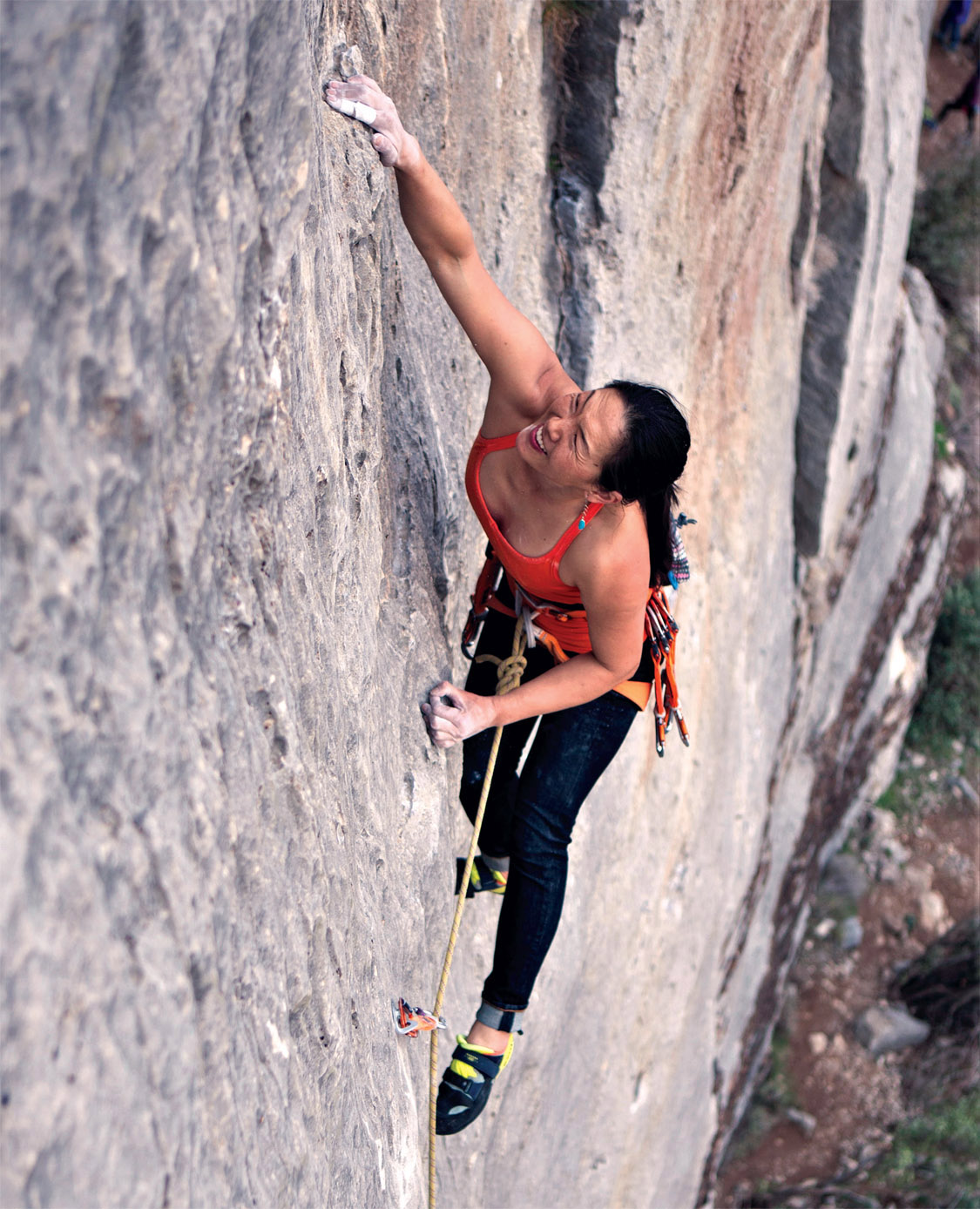John Long - Rock Climbing: The Art of Safe Ascent
Here you can read online John Long - Rock Climbing: The Art of Safe Ascent full text of the book (entire story) in english for free. Download pdf and epub, get meaning, cover and reviews about this ebook. year: 2021, publisher: Falcon Guides, genre: Home and family. Description of the work, (preface) as well as reviews are available. Best literature library LitArk.com created for fans of good reading and offers a wide selection of genres:
Romance novel
Science fiction
Adventure
Detective
Science
History
Home and family
Prose
Art
Politics
Computer
Non-fiction
Religion
Business
Children
Humor
Choose a favorite category and find really read worthwhile books. Enjoy immersion in the world of imagination, feel the emotions of the characters or learn something new for yourself, make an fascinating discovery.

- Book:Rock Climbing: The Art of Safe Ascent
- Author:
- Publisher:Falcon Guides
- Genre:
- Year:2021
- Rating:4 / 5
- Favourites:Add to favourites
- Your mark:
- 80
- 1
- 2
- 3
- 4
- 5
Rock Climbing: The Art of Safe Ascent: summary, description and annotation
We offer to read an annotation, description, summary or preface (depends on what the author of the book "Rock Climbing: The Art of Safe Ascent" wrote himself). If you haven't found the necessary information about the book — write in the comments, we will try to find it.
Rock Climbing: The Art of Safe Ascent — read online for free the complete book (whole text) full work
Below is the text of the book, divided by pages. System saving the place of the last page read, allows you to conveniently read the book "Rock Climbing: The Art of Safe Ascent" online for free, without having to search again every time where you left off. Put a bookmark, and you can go to the page where you finished reading at any time.
Font size:
Interval:
Bookmark:
John Long is an acclaimed rock climber and author of more than forty books, including several in Falcons catalog. He is one of the most prolific adventure writers out there and has authored magazine articles, screenplays, documentary films, and television and movie scripts, as well as instructional rock climbing books.
Beginning in the mid-1970s with his historic one-day ascent of The Nose route on El Capitan, Long became a mainstay in the world of extreme sports and adventure. He and his elite group of climbers, the Stonemasters, ushered in a new era of big wall climbing with their epic climbs in Yosemite National Park and elsewhere. In the years that followed, John transitioned from rock climbing to international exploration, traveling around the world from the jungles of Southeast Asia to the North Pole. Some of his many achievements include the first coast-to-coast traverse of Borneo and the discovery and exploration of the worlds largest river cave.
John has also built a successful television and film career, producing the International Guinness Book of World Records television show before moving to feature films. The Sylvester Stallone movie Cliff-hanger is based on one of Johns stories.
In recent years, John has continued to write books and articles and to work in television and film. He is also an Adidas Ambassador and frequently works with them at various events around the country.
Bob Gaines began rock climbing at Joshua Tree National Park in the 1970s. Since then he has pioneered more than 500 first ascents in the park.
Bob began his career as a professional rock climbing guide in 1983 and is an American Mountain Guides Association Certified Rock Instructor. He is the coauthor of Rock Climbing: The AMGA Single Pitch Manual, the textbook for the AMGAs single-pitch instructor program.
Bob has worked extensively in the film business as a climbing stunt coordinator. He has coordinated more than forty television commercials and was Sylvester Stallones climbing instructor for the movie Cliffhanger. Bob doubled for William Shatner in Star Trek V: The Final Frontier as Captain Kirk free soloing on El Capitan in Yosemite.
Bob has worked extensively training US military special forces, including the elite US Navy SEAL Team 6, and is known for his technical expertise in anchoring and rescue techniques.
He is also the author of Best Climbs Joshua Tree National Park, Best Climbs Tahquitz and Suicide Rocks, Toproping: Rock Climbing for the Outdoor Beginner, Rappelling, and Advanced Rock Climbing and is coauthor of Climbing Anchors and the Climbing Anchors Field Guide (with John Long).
Bobs other passion is fly fishing. He currently holds fourteen International Game Fish Association world records.
S pecial thanks to Ron Funderburke, writer and former education manager for the American Alpine Club, and now director of education for the Colorado Mountain School, and Philippe Westenberger, head of product for Edelrid, one of the most innovative gear manufacturers in the business. Ron and Philippe both reviewed the text, and their feedback was invaluable in ensuring the material is current, clear, and accurate. And a huge shout-out to climber, ultra runner, photographer, and SMC marketing director John Evans, who gave us full access to his spectacular library of climbing images (including the cover photo), which breathed life and gusto into otherwise technical material.
Thanks to Steve Grossman, curator of the North American Historical Archives, for his help with the historical photos.
Thanks to all the climbers and guides who graciously posed for photos, including: Tony Sartin, Tony Grice, Patty Kline, Mike Moretti, Erin Guinn, Michael Baines, Steve Schwartz, Terri Condon, Lisa Rands, Mike and Lori Satzberg, Roddy McCalley, David Kerner, John Lauretig, Francisco Kim, Alex Nunez, Chris Norwood, Frank Bentwood, Farai Muchenje, Melissa Popejoy, and Casey Stroud.
And last but not least, thanks to FalconGuides editorial director David Legere, senior production editor Meredith Dias, and layout artist Melissa Evarts for putting it all together.

Rita Young Shin on The Sadness (5.12a), Lime Kiln Canyon, Arizona
PHOTO BY JOHNEVANS
R opes, slings, carabiners, and protection devices are someones personal property, but during a climb they are mutually shared by the climbing team. A climbers personal gear, used only by them, consists of six basic items: shoes, chalk bag, helmet, harness, belay device, and personal tether (as needed).
Since climbing gear has evolved into specialized equipment, its very important to read the manufacturers manual and instructions that come with any harness or belay device. Manufacturers have put a lot of work into explaining the best and proper usage of their products, and all of this information is in the manual or written material found with every piece of gear you buy. All manufacturers agree on the need to regularly check your equipment, preferably before and after each use.
Climbing shoes are not a safety issue, but since they are the single most important item of your personal gear, they deserve a few words. There are three basic models, secured to your feet via standard lacing systems or Velcro straps (hook-and-loop). The models include neutral, moderate, and aggressive profile shoes.
Everyone new to outdoor climbing should consider starting with neutral profile shoes. This includes expert gym climbers used to wearing high-performance, reverse-camber (aggressive) shoes. Granted, many gym climbers venture outdoors to only tic short, clip-and-go sport routes, in which case aggressive shoes will do. But anyone interested in multipitch climbing will immediately encounter some crack climbing. Aggressive profile shoes are designed to toe-in on small pockets and footholds on overhanging rock, not for twisting your feet into cracksthe native turf of neutral profile shoes.

Selection of climbing shoes from Nomad Ventures Climbing shop in Idyllwild, California
Neutral profile models feature flat-bottomed outer soles (like sneakers), allowing your feet to lie flat inside the shoes. They are less constricting (boxier), promoting all-day comfort, and remain the go-to shoe for long multipitch routes where some scrambling and hiking are expected. That said, Tommy Caldwell and Kevin Jorgeson made the first free ascent of the Dawn Wall on El Capitanquestionably the hardest long free climb in the worldin neutral profile shoes.
Legendary boulderer John Gill was first (c. 1950s) to use gymnastic chalk for rock climbing. Dry hands, Gill quickly discovered, meant superior grip. By the early 1970s, chalk became an accepted, necessary evil for climbers worldwide.

Block chalk can be broken down into powder form once inside the chalk bag.
Chalk is carried in a small bag attached to a thin waist belt with plastic buckle (common) or a short bit of thin tech cord tied with a square knot (rare) and cinched at the waist. Both allow you to freely move the bag around your waistcrucial for battling up chimneys and body cracks.
There are two basic models of chalk bags. Sport bags are smaller and typically flat on one side, allowing the back of the bag to lie flush against the small of your back, where it usually rides. Reaching behind to chalk up quickly becomes an instinctual move.
Font size:
Interval:
Bookmark:
Similar books «Rock Climbing: The Art of Safe Ascent»
Look at similar books to Rock Climbing: The Art of Safe Ascent. We have selected literature similar in name and meaning in the hope of providing readers with more options to find new, interesting, not yet read works.
Discussion, reviews of the book Rock Climbing: The Art of Safe Ascent and just readers' own opinions. Leave your comments, write what you think about the work, its meaning or the main characters. Specify what exactly you liked and what you didn't like, and why you think so.







